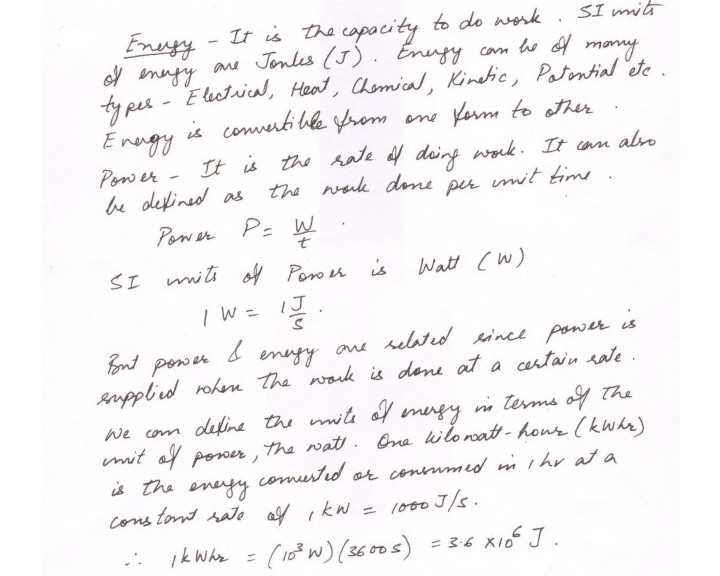A person pushes a 10 kg cart a distance of 20 meters by exerting a 60 Newton horizontal force. The frictional resistance force is 50 Newtons. How much work is done by each force acting ont he cart? How much kinetic energy does the cart have at the end of the 20 meters if it started from rest:
Mass of cart = 10 kg
Distance moved = 20 m
Horizontal force = 60 N
Frictional force = 60 N
Frictional resistance force = 50 N
Net force = 60 – 50 = 10 N
Work done by the horizontal force = 60 x 20 = 1200 J
Work done by the frictional force = – 50 x 20 = -1000 J
(It is negative because force and displacement are opposite to each other)
Net work done = 1200 – 1000 = 200 J
= Change in the K.E. of the cart.
If the cart started from rest, the initial K.E. = 0
Final K.E. – Initial K.E. = 200 J
So Final K.E. = 200J
Assuming an efficiency of 25% for the muscle system in the process of converting food energy into mechanical work, how much energy would be used by a person of mass 75 kg (weight 165lb) in the process of climbing four flights of stairs for a total height of 15 metes? Find the answer in joules and convert to dietary calories (1 dietary calorie = 4186 Joules)
Efficiency ? = 25%
Mass of the person = 75 kg
Height climbed = h = 15 m
Work done = gain in P.E. = mgh
= 75 x 9.8 x 15 = 11025 J
Since the efficiency of the muscle system = 25%, the food energy required to do this work = (100 x 11025)/25 = 44100 J
4186 Joules = 1 dietary calorie
44100 Joules = 44100 / 4186 = 10.5 dietary calories.
The potential energy of a 0.2 kg particle moving along the x axis is given by:
U(x) = 8x2 – 2x4
where U is in Joules and x in meters. When the particle is at x = 10 m, what will be its acceleration?
m = 0.2 kg
P.E. U(x) = 8x2 – 2 x4
here U is in Joules and x in meters
Intensity T = -du/dx
=- -d[8x2 – 2 x4]/dx = -(16x -8x)
The intensity is equal to the force per unit mass which is the same as acceleration
a = -(16x – 8x)|x = 10 m
= -(160 -80) = -80 m/s2
In common speech, we often
use the words energy and power interchangeably as
if they were synonyms. However in physics the have
distinctly different definitions and are not synonymous.
Explain the difference between these terms as they are used in
physics.